Ideal Diode
In the case of a forward-biased condition, the ideal diode should offer zero resistance. In contrast, in the case of a reversed biases condition, it should offer infinite resistance.
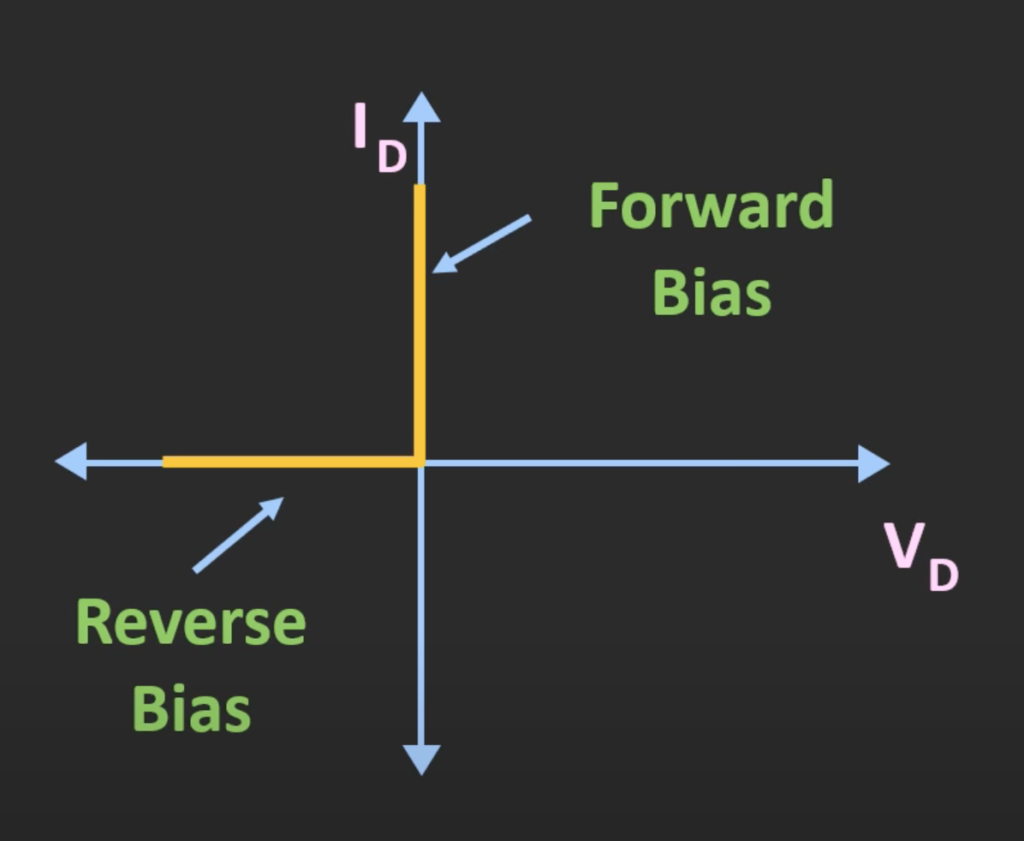
Real Diode
In reality, the actual diode offers some finite resistance in the forward biased condition and offers really large resistance in the reversed-biased condition.
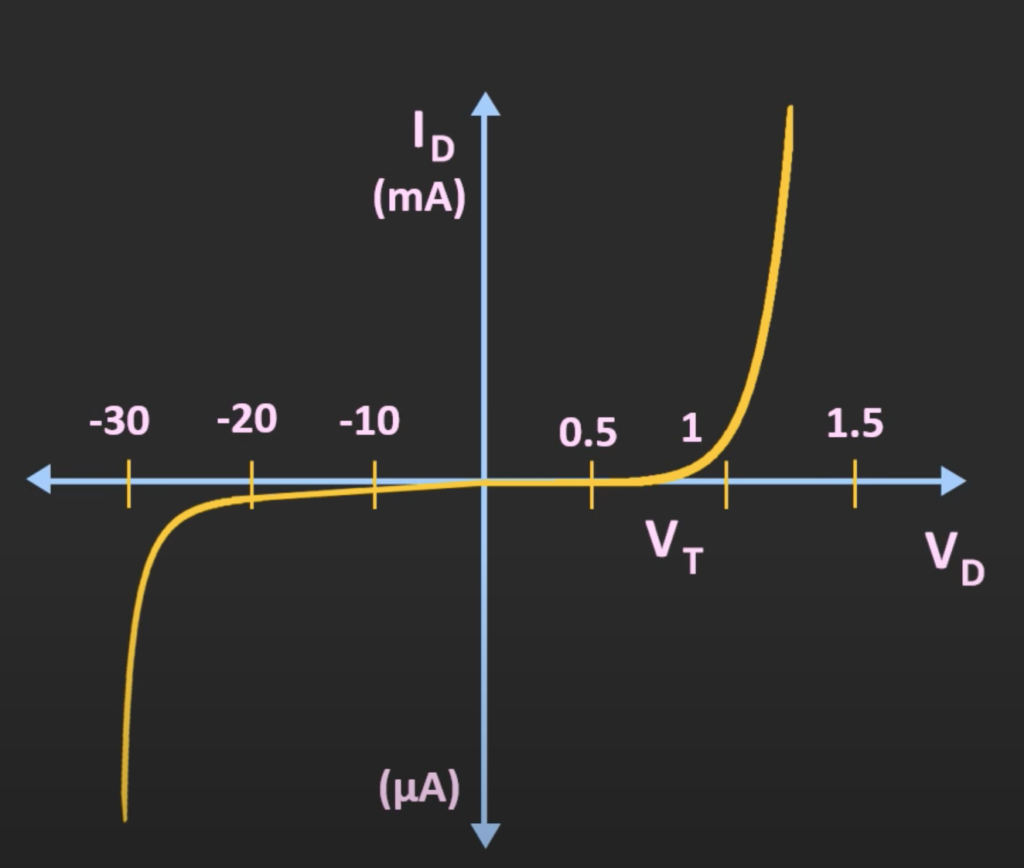
The curve for the actual diode would look like the following if the scale on both axes is constant. From the curve, we can see that, unlike a normal resistor, the relationship between the voltage and current is non-linear for the actual diode. Depending on the operation condition, the resistance offered by the diode will change.
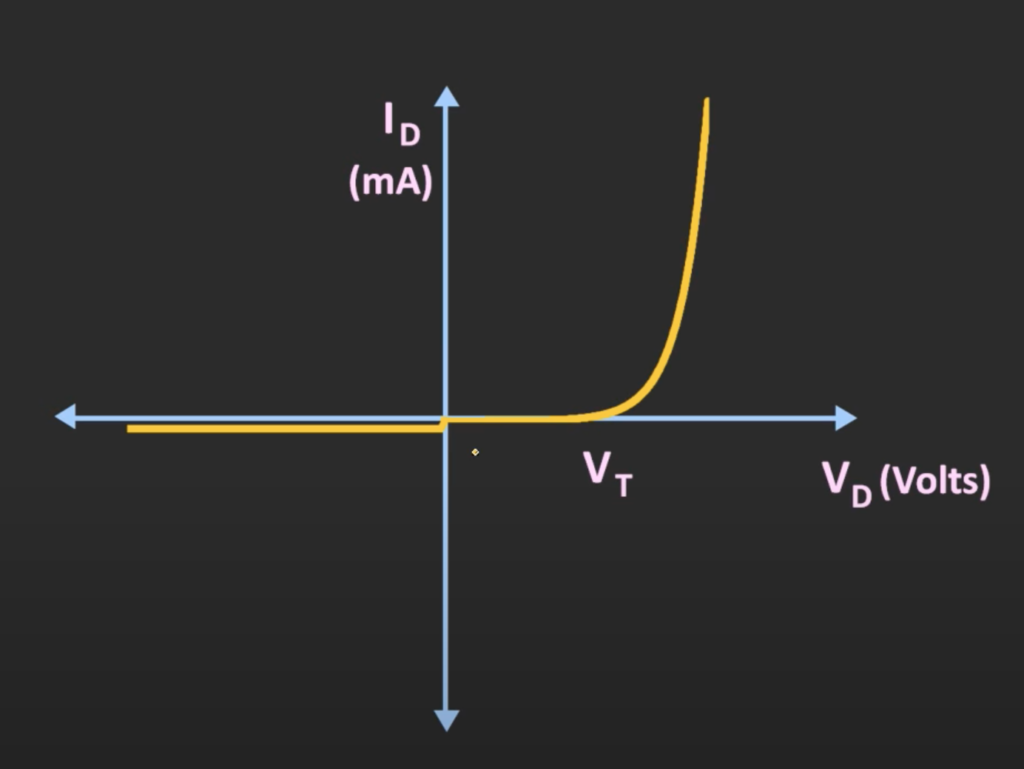
The diode resistance can be categorised into two categories, static resistance and dynamic resistance.
Static Resistance / DC Resistance
The DC resistance of the diode is the resistance that is offered by the diode in the case when the applied voltage is DC voltage. This value of DC resistance can be found by knowing the value of the operating voltage and current.
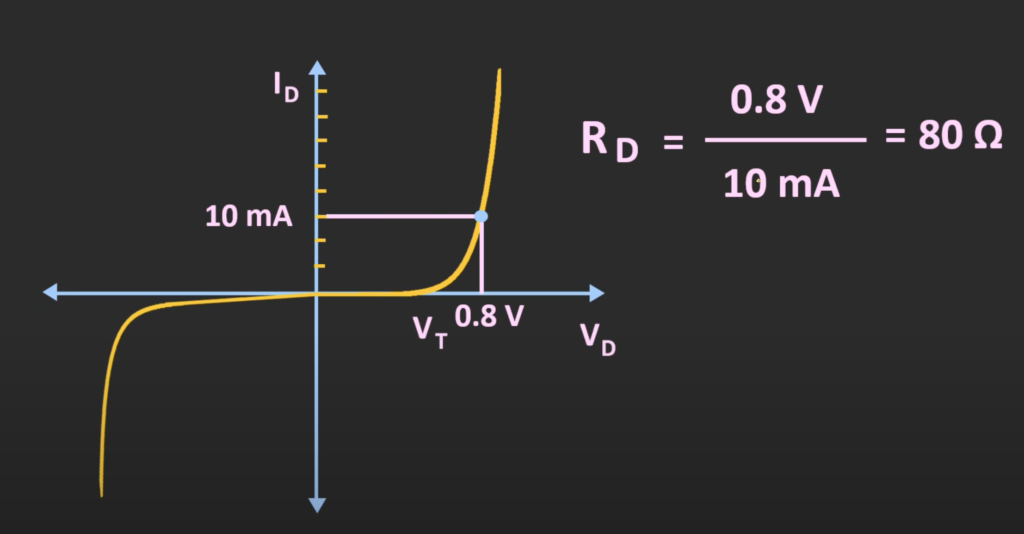
Whenever the diode is forward-biased, the resistance offered by the diode is called the DC forward resistance. Similarly, when the diode is operated in the reversed biased condition, the resistance offered by the diode is called the reverse DC resistance.
Dynamic Resistance / AC Resistance
The blue point on the graph corresponds to the applied DC voltage and on top of this DC voltage, some finite AC voltage has been applied. On the x-axis, there is an applied AC voltage, and correspondingly on the y-axis the current flowing through the diode will also change. Thus, the resistance will also change continuously within a certain band.
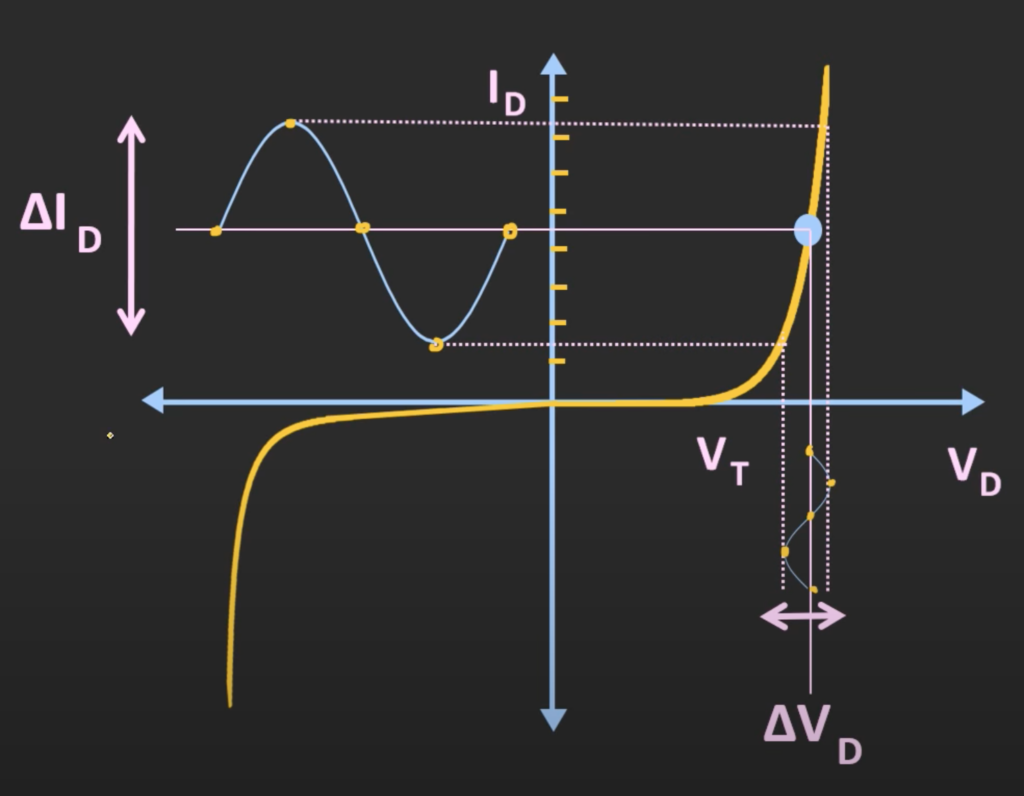
The AC resistance can be found by drawing the tangent to that point. The slope of the line will give the resistance of the diode.
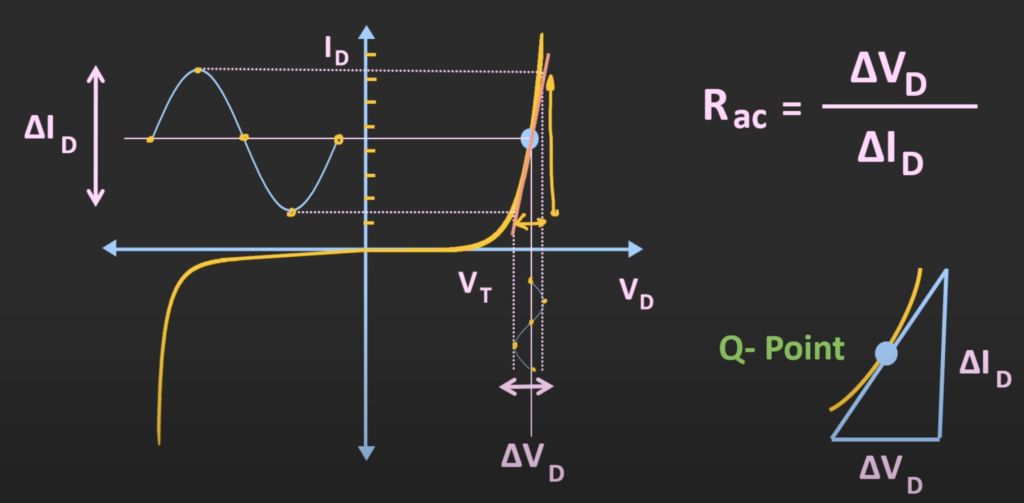
Find AC Resistance Through Equation
This expression defines the relationship between the diode current and the voltage across the diode.
- Reverse Saturation Current: Current that is flowing through the diode in the reverse biased condition.
- Thermal Voltage: It is voltages created by the junction of dissimilar metals when a temperature difference exists between these junctions.
- Ideality Factor: It is a measure of how closely the diode follows the ideal diode equation. It is usually a value between 1 and 2. This value is assumed to be 1.
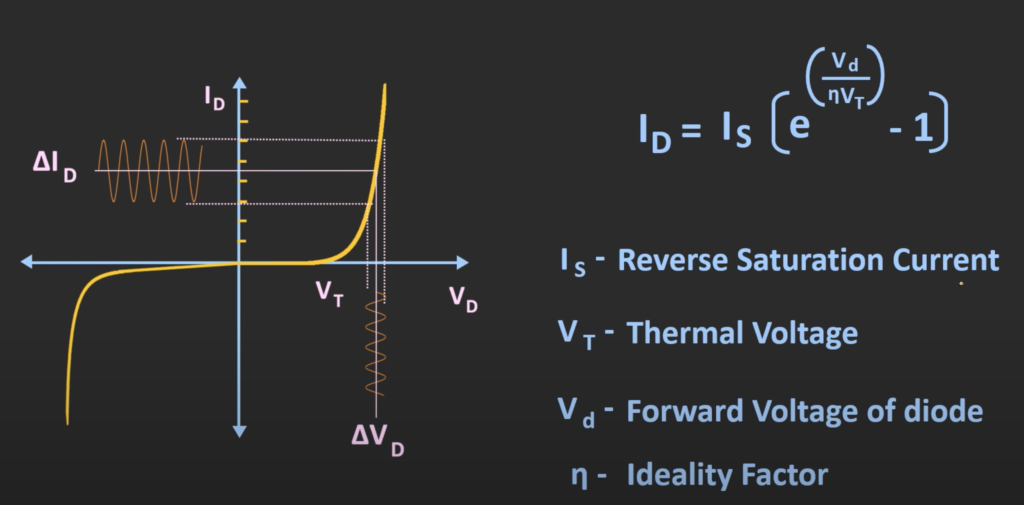
The thermal voltage is defined by this equation, at the room temperature of 27 degrees Celsius, the thermal voltage is approximately 26 mV.
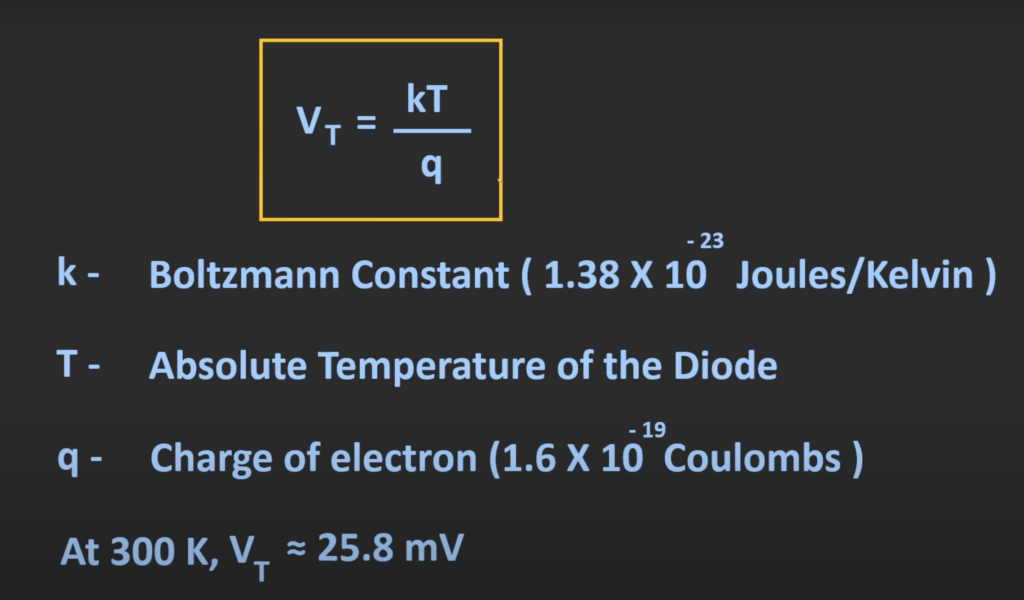
Since e^(Vd/Vt) is much larger than 1, the term (-1) can be neglected.
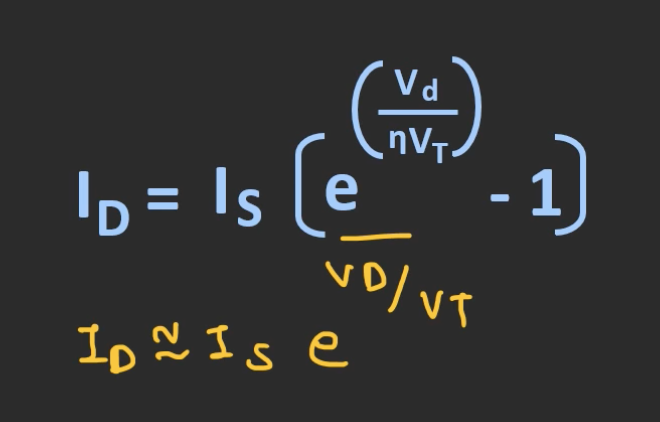
Then differentiate this equation with respect to Vd, we will get (Id+Is)/Vt
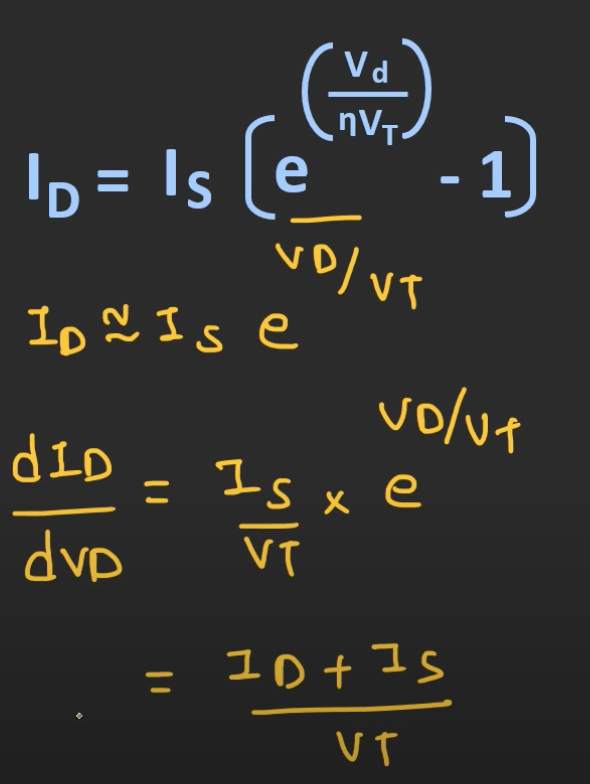
Since Is (Reverse Saturation Current) is really small, it can be neglected.
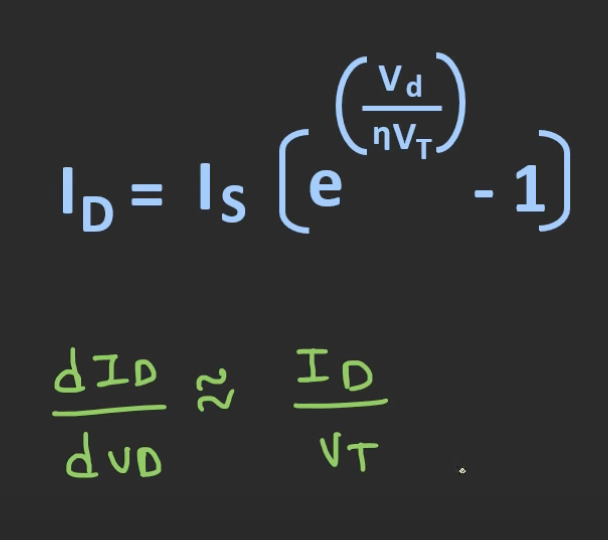
Finally, taking the inverse of it can give us the resistance.
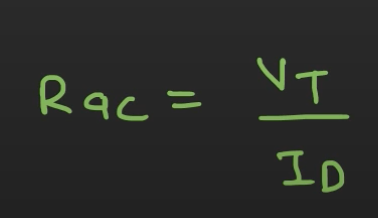
Diode Resistance
Bulk Resistance: It is the resistance that is offered by the semiconductor material which is used for the construction of the diode. This value is very small and usually can be negligible.
